
If you love knitting and want to try your hand at lace knitting, a lace shawl is the perfect project for you. Lace knitting involves creating intricate patterns with holes and openwork, resulting in a delicate and lightweight fabric. A lace shawl is not only a stylish accessory but also a versatile one that can be worn in any season.
When it comes to knitting a lace shawl, there are countless patterns available online and in knitting books. However, if you’re looking for a classic and timeless design, a lace shawl knit pattern is a great choice. Lace shawls are often worked from the center out, starting with just a few stitches and gradually increasing in size.
One popular lace shawl knit pattern is the “Feather and Fan” pattern, also known as the “Old Shale” pattern. This pattern features a series of waves created by alternating increases and decreases, giving the shawl a graceful and ethereal look. The “Feather and Fan” pattern is relatively easy to knit, making it suitable for beginner lace knitters.
Whether you’re knitting a lace shawl for yourself or as a thoughtful gift for a loved one, the process of creating a delicate lace fabric is both enjoyable and rewarding. With a lace shawl knit pattern, you can create a beautiful and unique accessory that will be treasured for years to come.
How to Knit a Beautiful and Delicate Lace Shawl
Knitting a lace shawl can be a rewarding and enjoyable project for both beginners and experienced knitters. The delicate and intricate patterns of lace make for a stunning finished product that can be worn as a fashionable accessory or given as a thoughtful gift.
Before starting your lace shawl project, it’s important to choose the right yarn and needle size. Lace-weight yarn is typically used for lace knitting, as it creates a lightweight and drapey fabric. Pair this with appropriately sized needles to achieve the desired tension and stitch definition.
The first step in knitting a lace shawl is to cast on the desired number of stitches. This will depend on the pattern you are following and your desired shawl size. Be sure to read and understand the pattern instructions before casting on to ensure you have the correct number of stitches.
Once your stitches are cast on, it’s time to start knitting the lace pattern. Lace patterns often incorporate yarn overs, decreases, and other techniques to create the intricate and delicate lace motifs. Follow the pattern instructions carefully, making sure to keep track of any stitch counts or pattern repeats.
As you progress through the lace pattern, it’s important to pay attention to your tension and stitch consistency. Lace patterns can be unforgiving when it comes to mistakes, so take your time and double-check your work as needed. Blocking your lace shawl once it’s finished can also help even out any inconsistencies and enhance the overall drape and beauty of the fabric.
When you reach the end of your lace shawl pattern, it’s time to bind off and finish the project. Again, follow the pattern instructions for the appropriate bind off method. Once your shawl is bound off, weave in any loose ends and give it a final blocking if desired. Then, sit back and admire your beautiful and delicate lace shawl, ready to be worn and enjoyed.
Why a Lace Shawl is a Must-Have in Your Wardrobe
A lace shawl is not just a fashion accessory, but a versatile piece that can elevate any outfit and add a touch of elegance. Whether you are attending a formal event, going for a casual outing, or just want to add some flair to your everyday look, a lace shawl is the perfect choice.
One of the main reasons why a lace shawl is a must-have in your wardrobe is its versatility. It can be worn in multiple ways – as a wrap, scarf, or even a sarong. This means you can style it according to your outfit and the occasion. Its timeless design and delicate detailing make it suitable for both day and evening wear.
Added Warmth and Comfort: Apart from its aesthetic appeal, a lace shawl also offers additional warmth in chilly weather. Made from soft and lightweight materials such as silk, cashmere, or a blend of fibers, it provides just the right amount of insulation without feeling heavy or bulky.
Enhanced Style: The intricate lace patterns of a shawl instantly elevate your overall look, transforming a plain outfit into something stylish and sophisticated. Whether you drape it over your shoulders, wrap it around your neck, or tie it in a creative knot, a lace shawl adds that extra touch of glamour and femininity.
Practicality: A lace shawl is not just a fashion accessory, but a practical item as well. It can be easily folded and packed into a small space, making it an ideal travel companion. It can also be a versatile layering piece, providing coverage and style during transitional seasons.
In conclusion, a lace shawl is a must-have in your wardrobe due to its versatility, added warmth, enhanced style, and practicality. Invest in a high-quality lace shawl and explore the various ways in which you can incorporate it into your outfits to create a stunning and timeless look.
Getting Started: Choosing the Right Yarn and Needles
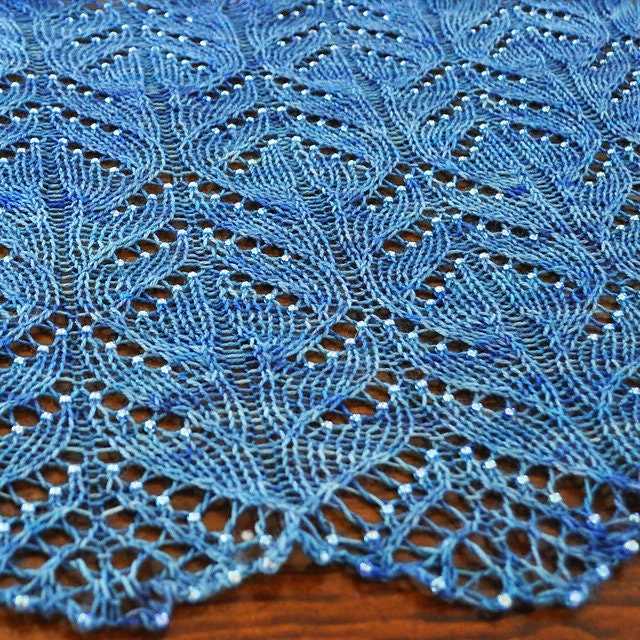
When it comes to knitting a lace shawl, selecting the right yarn and needles is crucial for achieving the desired outcome. The type of yarn you choose will not only affect the overall look and feel of the shawl, but also its drape and stitch definition. It’s important to consider factors such as fiber content, weight, and yardage.
For a lace shawl, it’s generally recommended to use a lightweight yarn with good stitch definition. This allows the delicate lace patterns to shine through while creating an airy and lightweight fabric. Lace weight or fingering weight yarns are popular choices, as they provide the necessary drape and fine detail.
When it comes to fiber content, natural fibers such as wool, alpaca, silk, or a blend of these are often preferred for lace knitting. These fibers have good elasticity and drape, allowing the lace to open up beautifully. However, you can also experiment with other fibers such as cotton or bamboo for a different look and feel.
In terms of needles, the choice between straight or circular needles depends on personal preference and the size of the project. Circular needles are commonly used for larger shawls, as they allow for more stitches and distribute the weight of the project more evenly. They also make it easier to work on lace patterns that require multiple repeats. Straight needles, on the other hand, are suitable for smaller shawls or if you prefer working with them.
When selecting the size of your needles, it’s important to swatch and check your gauge before starting the shawl. This will ensure that you’re achieving the desired stitch count and that the finished shawl will have the correct dimensions. It’s also worth noting that using larger needles will result in a more open and lacy fabric, while smaller needles will produce a tighter and denser fabric.
In conclusion, choosing the right yarn and needles for your lace shawl is essential for achieving the desired outcome. By considering factors such as fiber content, weight, and needle size, you can create a beautiful and delicate shawl that showcases the intricacies of the lace patterns.
Understanding the Lace Knitting Chart
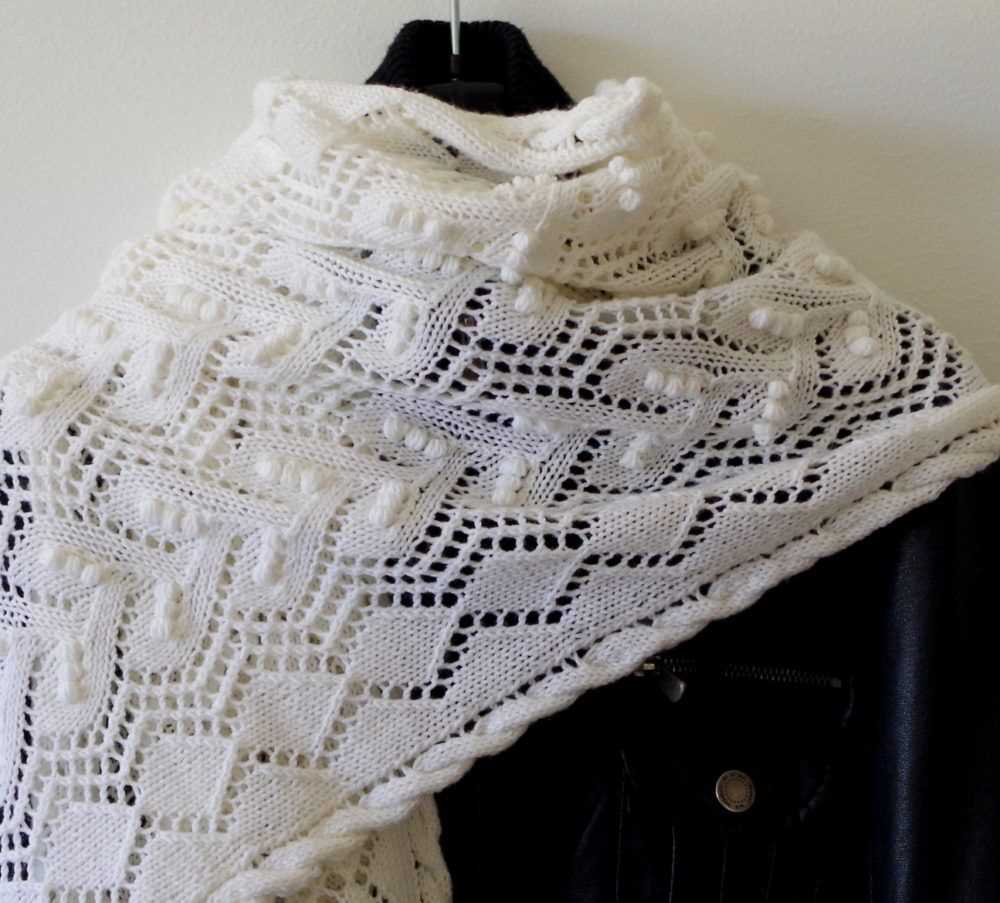
When it comes to knitting lace shawls, understanding the lace knitting chart is essential. The chart provides a visual representation of the stitches and patterns used in the design, helping knitters follow the pattern accurately and create beautiful lace motifs.
What is a lace knitting chart?
A lace knitting chart is a graphical representation of a lace pattern. It consists of a grid with symbols or color-coded squares, each representing a specific stitch or series of stitches. The chart is read from right to left for right-side rows and from left to right for wrong-side rows.
How to read a lace knitting chart?
To read a lace knitting chart, it’s important to understand the symbols or colors used to represent the stitches. Common symbols include yarn overs (O), knit stitches (K), purl stitches (P), decreases (/ or ), and other specific stitch patterns. Each symbol is usually accompanied by a key or legend that explains its meaning.
Tips for using a lace knitting chart:
- Start by familiarizing yourself with the key or legend.
- Read the chart row by row, following the stitch symbols as indicated.
- Use stitch markers to separate pattern repeats for easier tracking.
- Pay attention to any special instructions or stitch pattern variations indicated in the chart or written pattern.
- Count your stitches frequently to ensure accuracy.
- Practice reading and understanding smaller lace patterns before attempting larger and more complex designs.
Benefits of using a lace knitting chart:
A lace knitting chart provides a visual representation of the pattern, making it easier to visualize the finished design and anticipate stitch patterns. It also helps to keep track of where you are in the pattern, especially when working with complex lace motifs. Additionally, the chart allows for easier customization and modification of the pattern, as it can be easily adjusted or adapted to suit different sizes or desired changes.
Conclusion
Understanding the lace knitting chart is crucial for creating beautiful lace shawls. By familiarizing yourself with the symbols, following the chart accurately, and practicing with smaller patterns, you can enhance your lace knitting skills and confidently tackle more intricate designs.
Essential Techniques for Knitting Lace
Knitting lace can be a beautiful and intricate way to create delicate and airy garments. Whether you’re knitting a lace shawl or a lace scarf, there are a few essential techniques that every lace knitter should master. These techniques will help you create stunning lace pieces with ease and confidence.
1. Yarn Over (YO)
One of the most important techniques in lace knitting is the yarn over (YO). This simple stitch creates an eyelet hole in your fabric, allowing you to create the lacy patterns that define lace knitting. To do a yarn over, simply bring the working yarn from the back to the front of your work, without knitting or purling it. The yarn over is often paired with a decrease stitch to create the lacy designs in lace knitting.
2. Decreases
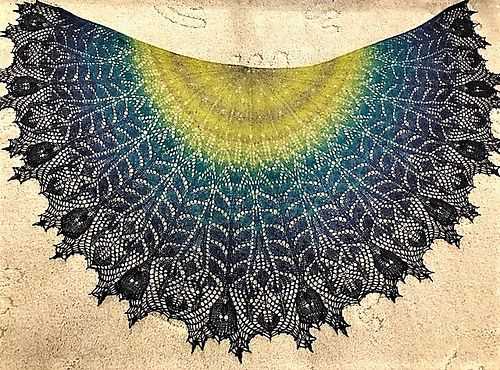
Decreases are another essential technique in lace knitting. They help create the intricate patterns and shapes in lace designs. There are several types of decreases commonly used in lace knitting, including knit two together (k2tog), slip slip knit (ssk), and centered double decrease (cdd). Each decrease has a slightly different effect on the fabric, so it’s important to understand how to execute them correctly.
3. Lifelines
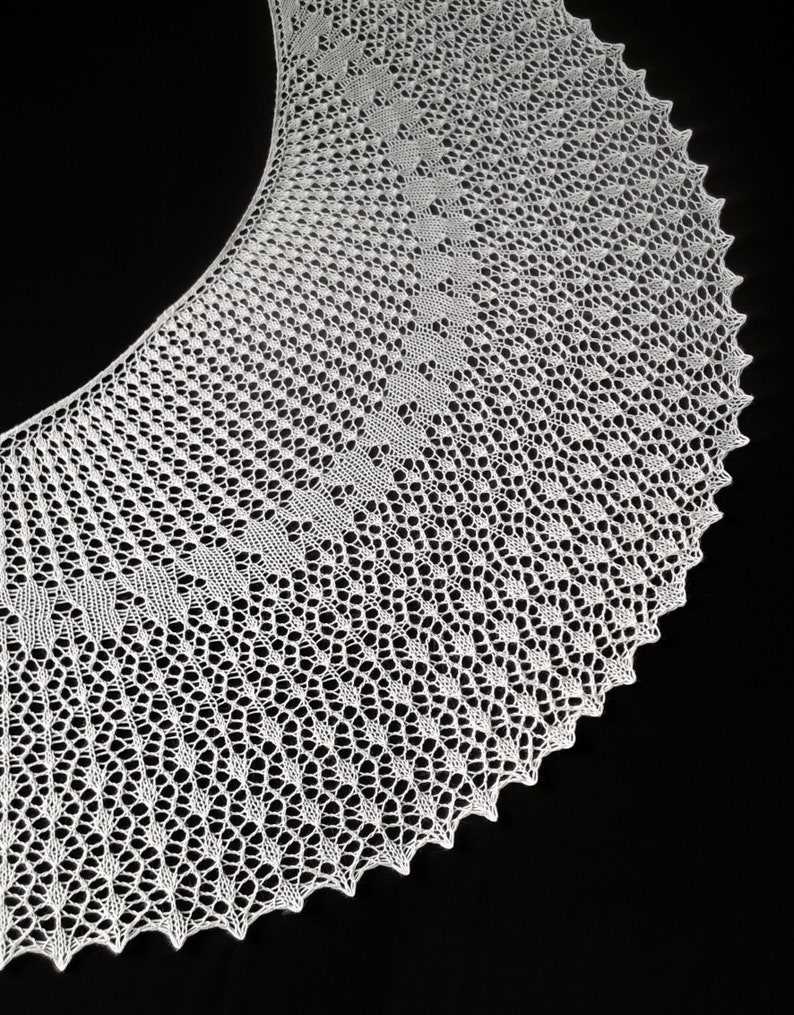
In lace knitting, mistakes can be more difficult to fix than in other types of knitting. To help with this, it’s a good idea to use lifelines. Lifelines are threads that you insert into your work at regular intervals, usually after completing a lace repeat. If you make a mistake and need to rip back, the lifeline will prevent your work from unraveling beyond that point, making it easier to pick up the stitches again. To use a lifeline, simply thread a contrasting thread or yarn through the stitches on your needle before starting the next row.
4. Blocking
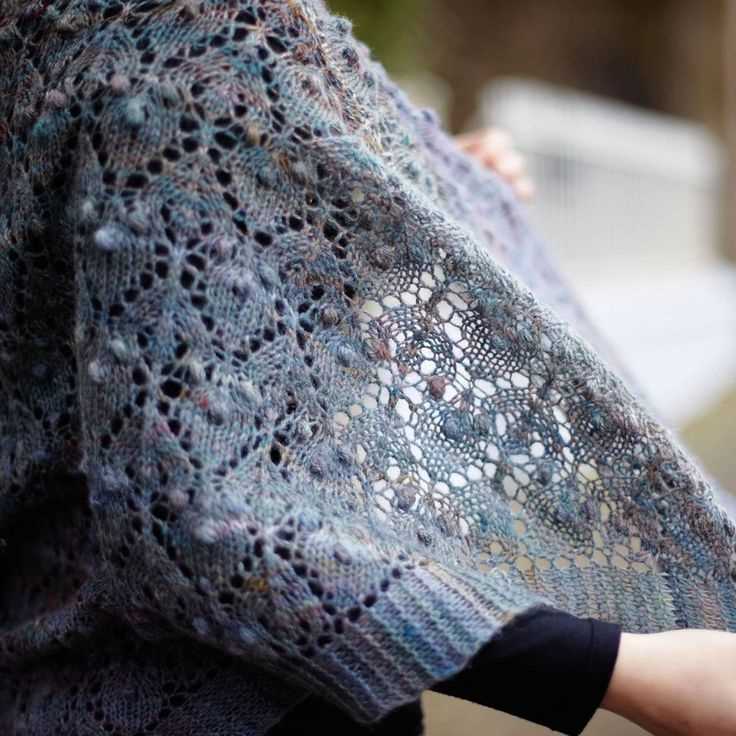
Blocking is an essential step in finishing lace knitting. After you’ve finished knitting your lace piece, it may look a bit scrunched up and uneven. Blocking helps to even out the stitches and open up the lace patterns, giving your finished piece a professional and polished look. There are different blocking techniques you can use, such as wet blocking or steam blocking, depending on the type of yarn you’re using and your personal preference.
- Overall, knitting lace requires attention to detail and a bit of practice, but the results are well worth it. Mastering these essential techniques will give you the confidence to tackle any lace knitting project and create beautiful, intricate garments that will impress everyone who sees them.
Tips and Tricks for Counting Stitches and Rows
Counting stitches and rows is an essential skill for any knitter, especially when working on intricate patterns such as lace shawls. Keeping track of your stitches and rows ensures that your project turns out as intended and helps you catch any mistakes before they become too difficult to fix. Here are some helpful tips and tricks to make counting stitches and rows easier:
Use stitch markers
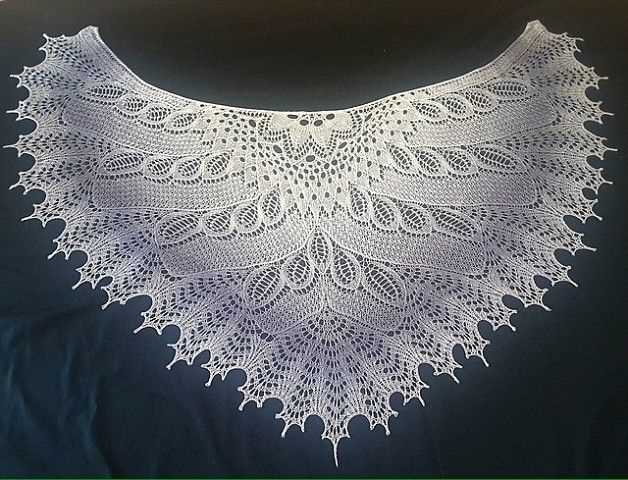
Stitch markers are small rings or clips that you can place on your knitting needles to mark specific stitches or sections of your work. By using stitch markers strategically, you can easily count your stitches and identify any patterns or repeats in the lace shawl pattern. For example, if the pattern calls for a repeat of 10 stitches, you can place a marker every 10 stitches to help you keep track.
Use a row counter
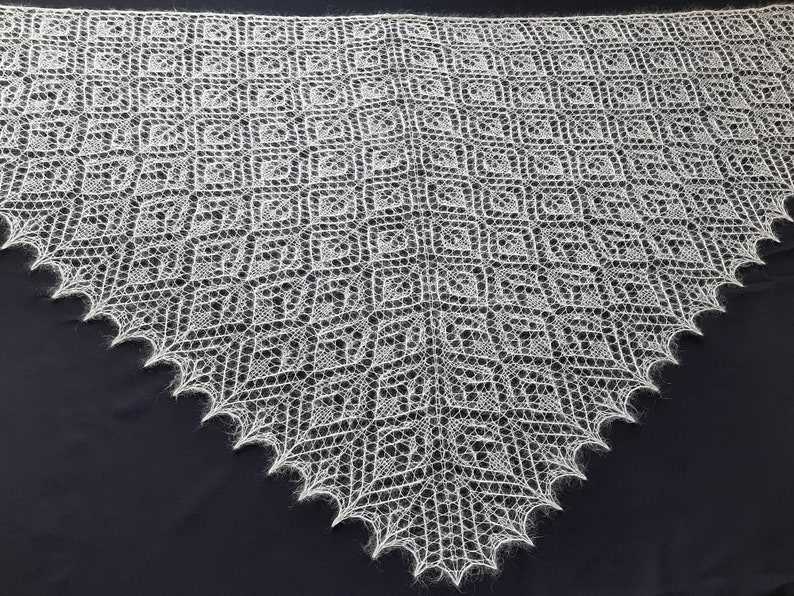
A row counter is a small device that you can attach to your knitting needles or wear on your wrist to keep track of the number of rows you have worked. Some row counters have a built-in mechanism that clicks or rotates with each row, while others are digital and can be programmed to count up or down. Using a row counter can save you from having to manually count rows and helps you stay on track with the lace shawl pattern.
Double-check your counts
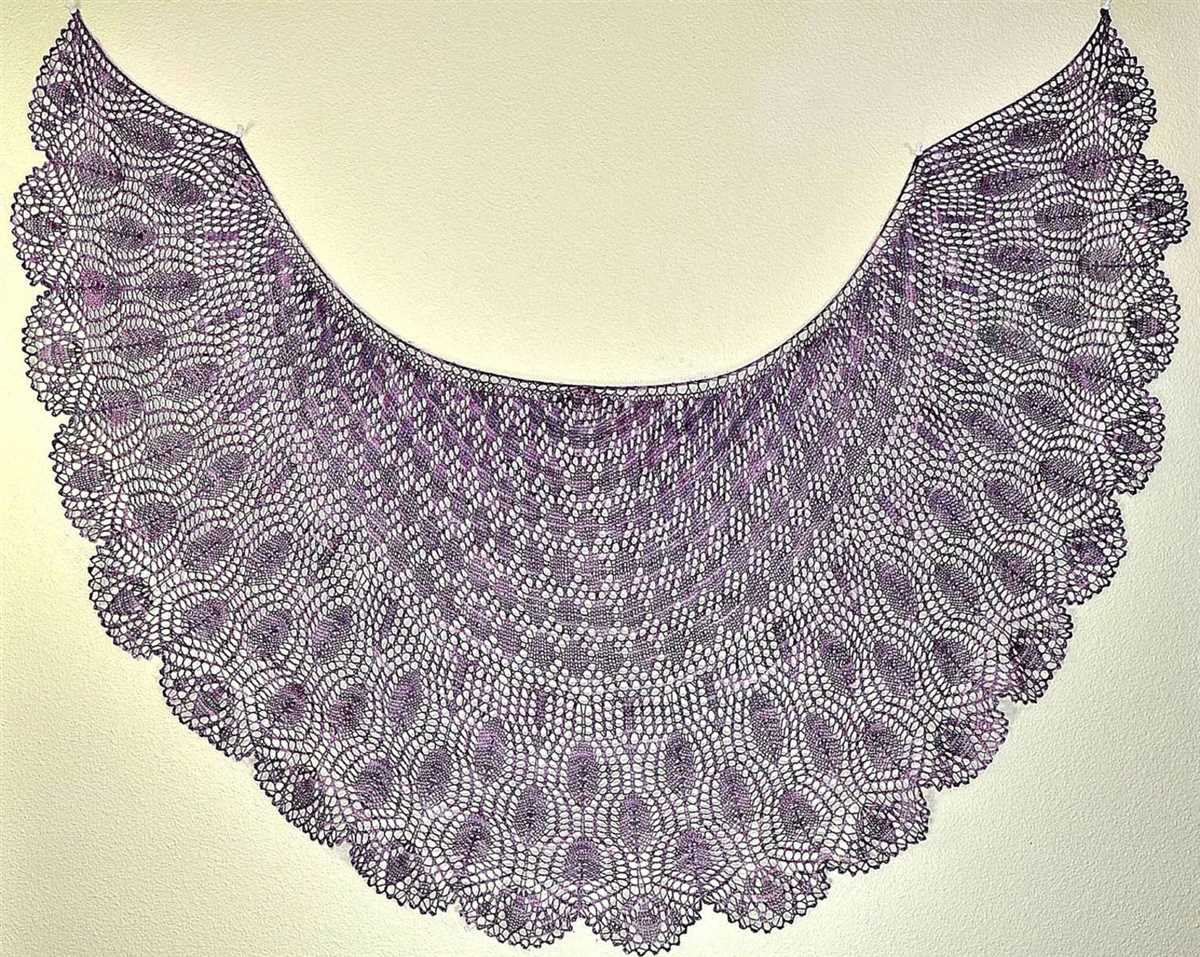
When counting stitches and rows, it’s important to double-check your counts to ensure accuracy. Mistakes in counting can lead to errors in the lace pattern and affect the overall look of your shawl. Take your time and go through your counts multiple times, especially when transitioning between different sections or stitch patterns. If you notice any discrepancies, backtrack and recount to find the mistake and correct it.
Use a lifeline
A lifeline is a thin strand of contrasting yarn that you can thread through your stitches at a specific point in your work. It acts as a safety net, allowing you to rip back to that point if you make a mistake without losing all of your progress. By inserting a lifeline every few rows or after completing a complicated section, you can confidently continue knitting, knowing that you have a way to easily fix any mistakes without having to start from scratch.
By following these tips and tricks, you can improve your counting skills and knit your lace shawl with confidence. Happy knitting!
Blocking: The Key to Achieving the Perfect Shape
When it comes to knitting lace shawls, achieving the perfect shape and drape is crucial. One of the most effective techniques to accomplish this is blocking. Blocking is the process of shaping and stretching the knitted piece to its desired dimensions, allowing the lace pattern to open up and the shawl to take on its final form.
There are several methods of blocking, but the most common approach for lace shawls is wet blocking. Wet blocking involves soaking the knitted piece in water, gently squeezing out the excess moisture, and then carefully pinning it into shape. This technique utilizes the inherent memory of the yarn fibers, allowing them to retain the blocked shape once dry.
Before blocking, it is essential to thoroughly read and follow the pattern instructions. The pattern may specify the desired dimensions of the shawl after blocking, as well as any particular instructions for shaping or stretching the lace. Additionally, it is a good idea to create a swatch and block it beforehand to ensure that the final measurements and appearance will meet your expectations.
When blocking a lace shawl, it is important to handle the piece with care to avoid damaging the delicate stitches. Use rust-proof T-pins or blocking wires to secure the edges and shape of the shawl. Start by pinning out the central axis and then work your way towards the edges, ensuring that the lace motifs are stretched evenly and that the overall shape is symmetrical.
While blocking can seem time-consuming, the results are well worth the effort. Blocking helps the lace shawl to achieve its full potential, enhancing the beauty of the intricate stitch pattern and creating a truly stunning accessory that is sure to turn heads.
Finishing Touches: Adding Fringe or Edging
When it comes to completing a lace shawl, the finishing touches can make all the difference. One popular option is to add fringe to the edges of the shawl. Fringe adds a decorative element and can also help to weigh down the edges, preventing the shawl from curling or rolling up. To add fringe, simply cut lengths of yarn and attach them to the ends of the shawl using a crochet hook or by making small knots. This can be done in a coordinated color or with contrasting yarn for a bold statement.
Another option for finishing the edges of a lace shawl is to add an edging. This can be done using a variety of techniques, such as knitting on an additional lace pattern or using a decorative stitch. Adding an edging not only adds a finished look to the shawl, but can also help to stabilize the edges and prevent them from stretching out. This is especially important if the shawl is made from a delicate or lightweight yarn.
When choosing a fringe or edging for your lace shawl, consider the overall style and aesthetic you want to achieve. If you want a more minimalist look, a simple fringe or a clean edging may be the best choice. If you want a more dramatic or bohemian feel, you may opt for a longer fringe or a more intricate edging pattern. Play around with different options and see what works best for your shawl and your personal style.
In conclusion, adding fringe or edging to your lace shawl can elevate its overall look and provide a polished finish. Whether you choose to go for a classic fringe or experiment with a unique edging pattern, these finishing touches will help make your lace shawl a true statement piece.
Choosing the Right Pattern for Your Lace Shawl
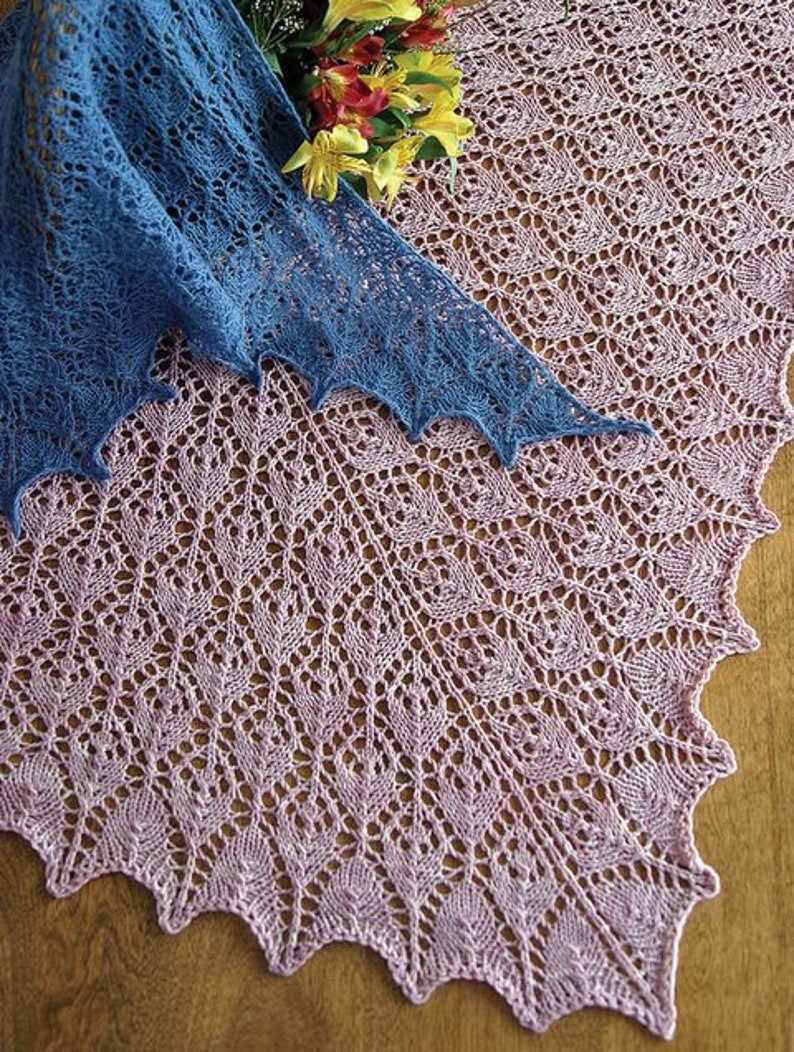
If you are looking to knit a lace shawl, it is important to choose the right pattern that suits your style and skill level. Lace shawls can be intricate and delicate, featuring beautiful lacework and intricate stitch patterns. With so many patterns available, it can be overwhelming to decide which one to choose. However, by considering a few factors, you can find the perfect pattern for your lace shawl project.
Skill Level: When choosing a lace shawl pattern, it is important to consider your skill level. Some lace patterns can be quite complex and require advanced knitting techniques. If you are a beginner or intermediate knitter, it is advisable to start with a pattern that has clear instructions and simpler stitch patterns. As you gain more experience, you can move on to more intricate lace designs.
Style: Different lace shawl patterns can create different looks and styles. Consider the type of shawl you want to knit, whether it’s a classic triangular shawl, a crescent-shaped shawl, or a rectangular stole. Look for patterns that match your personal style and the occasion you will be wearing the shawl for. Some patterns may have a more traditional or vintage feel, while others may be more modern and contemporary.
Yarn Choice: The choice of yarn can greatly impact the final look of your lace shawl. Lace weight or fingering weight yarns are commonly used for knitting lace shawls as they create a delicate and airy fabric. However, you can also experiment with different weights of yarn to achieve different effects. When selecting a pattern, consider the recommended yarn weight and fiber content to ensure that it will work well with your chosen yarn.
Pattern Difficulty: Take a look at the pattern instructions and gauge the level of difficulty. Are there any specific techniques or stitches that you are unfamiliar with? Will you need to use stitch markers or count stitches? Consider your comfort level with these aspects and choose a pattern that fits within your skill set. It is always good to challenge yourself, but also important to choose a pattern that you will enjoy working on.
Recommendations and Reviews: If you are unsure about a particular pattern, consider checking out online reviews or asking other knitters for recommendations. User reviews can provide valuable insights into the clarity of the pattern instructions and the finished result. You can also join online knitting communities or forums to discuss lace shawl patterns with fellow knitters and get their input and advice.
By considering factors such as skill level, style, yarn choice, pattern difficulty, and recommendations, you can find the perfect lace shawl pattern that will result in a beautiful and satisfying knitting project.
Inspiration and Ideas for Styling Your Lace Shawl
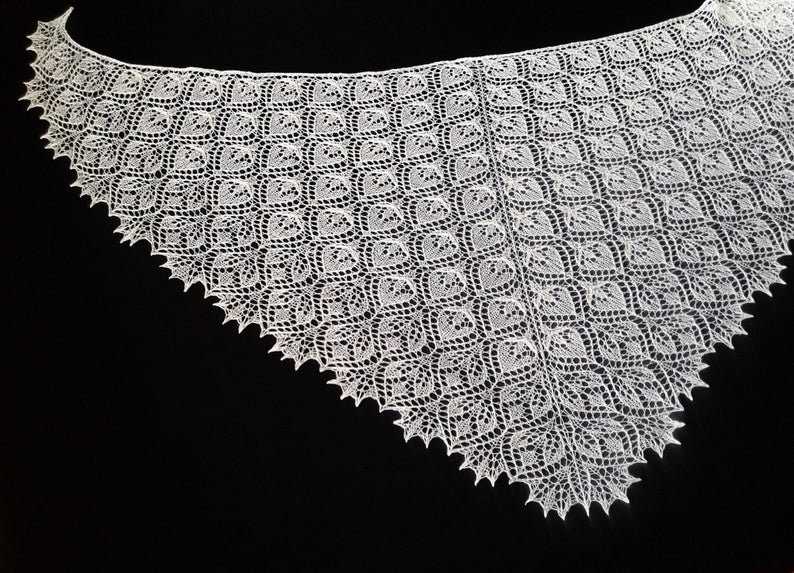
Once you have completed knitting your lace shawl, the next step is to think about how you want to style and wear it. Here are some ideas and inspiration to help you make the most of your beautiful creation.
1. Formal Occasions
If you have a special event or a formal occasion coming up, your lace shawl can be a perfect accessory to complete your outfit. Drape it elegantly over your shoulders or wrap it around your arms for a sophisticated and glamorous look. Choose a shawl with intricate lace patterns and delicate details to add an extra touch of elegance.
2. Casual Chic
For a more relaxed and casual look, you can style your lace shawl in a variety of ways. Wear it loosely around your neck as a statement scarf, or drape it over one shoulder for an effortless bohemian vibe. Pair your shawl with jeans and a simple top for a chic and stylish everyday outfit.
3. Beach Cover-up
If you’re heading to the beach or pool, your lace shawl can also double as a stylish cover-up. Wrap it around your waist as a sarong or tie it around your neck as a lightweight scarf. Opt for a shawl in a breezy and breathable fabric to keep you cool and protected from the sun.
4. Layering Piece
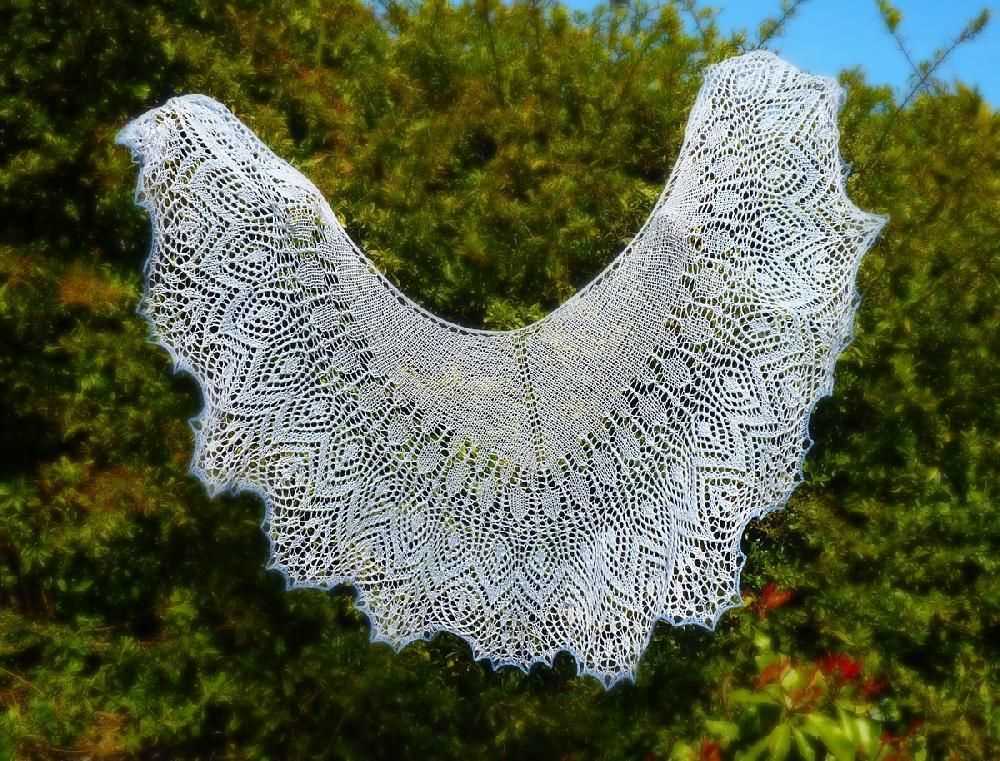
A lace shawl can also be a versatile layering piece for cooler weather. Drape it over a jacket or coat for added warmth and style. You can even wear it as a wrap around your shoulders indoors to add a touch of elegance to your outfit.
With its delicate and feminine design, a lace shawl can be a versatile and beautiful addition to any wardrobe. Whether you’re attending a formal event or simply want to add a touch of elegance to your everyday look, there are countless ways to style and wear your lace shawl. Get creative and experiment with different looks to make the most of your hand-knit creation.